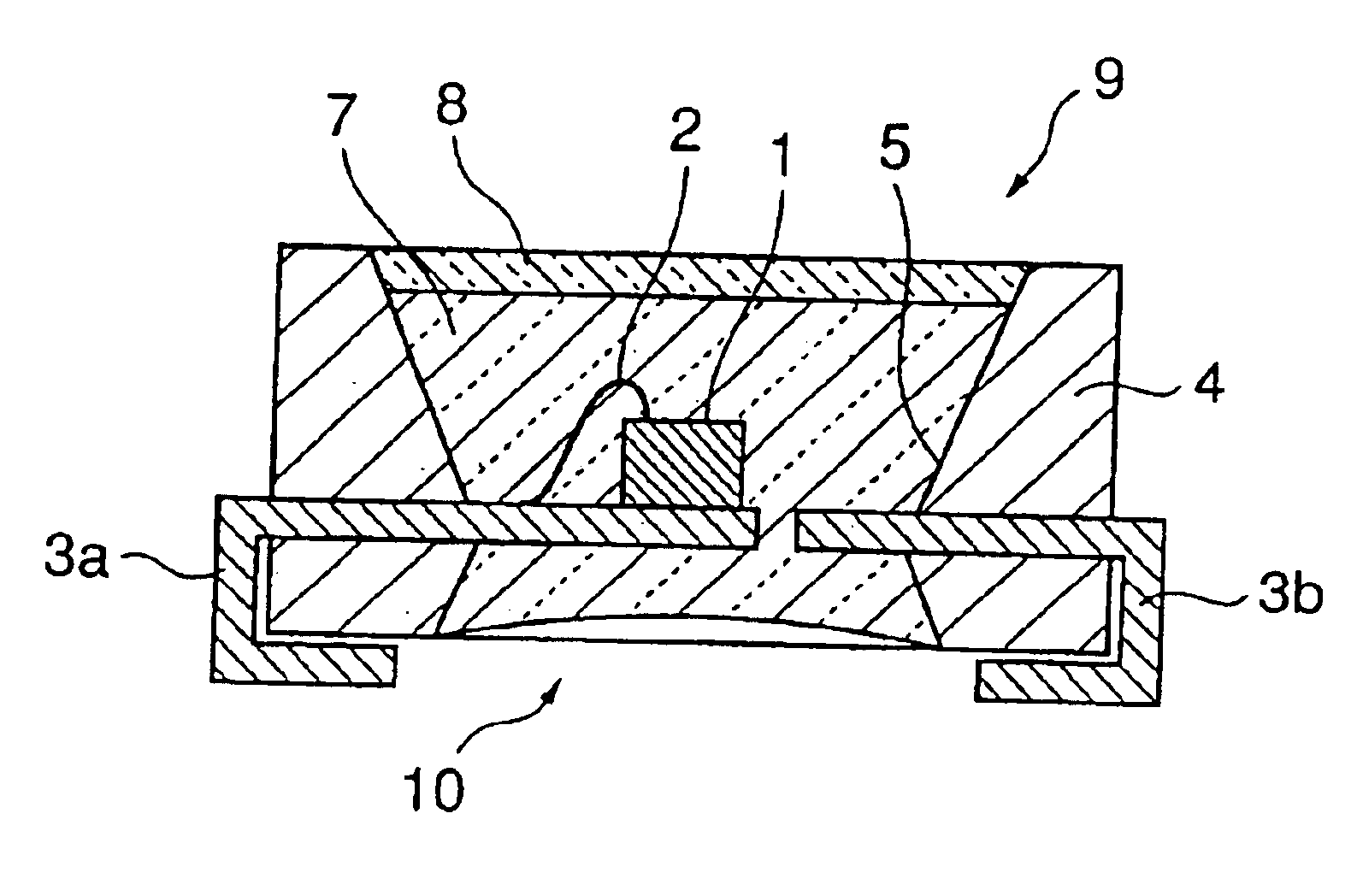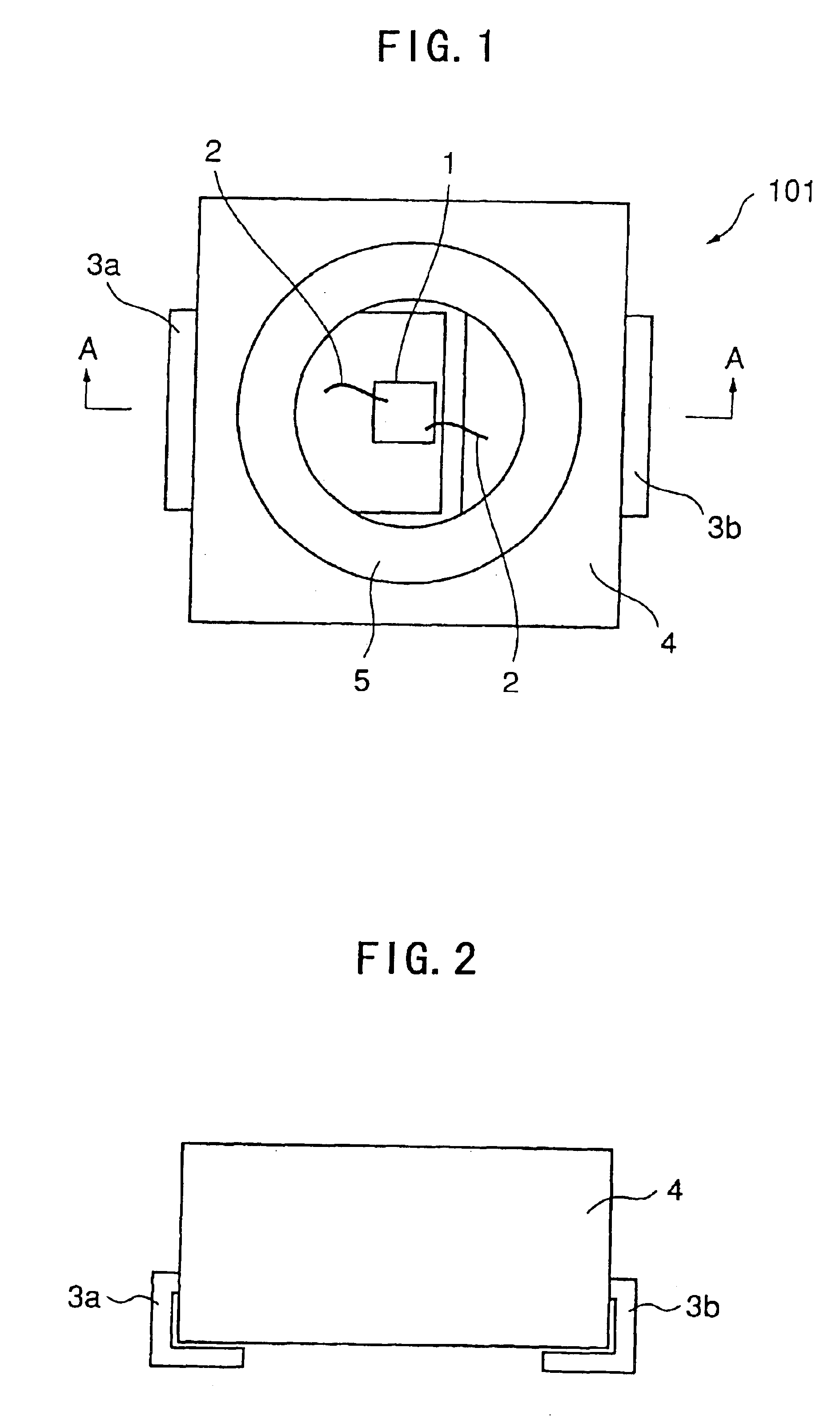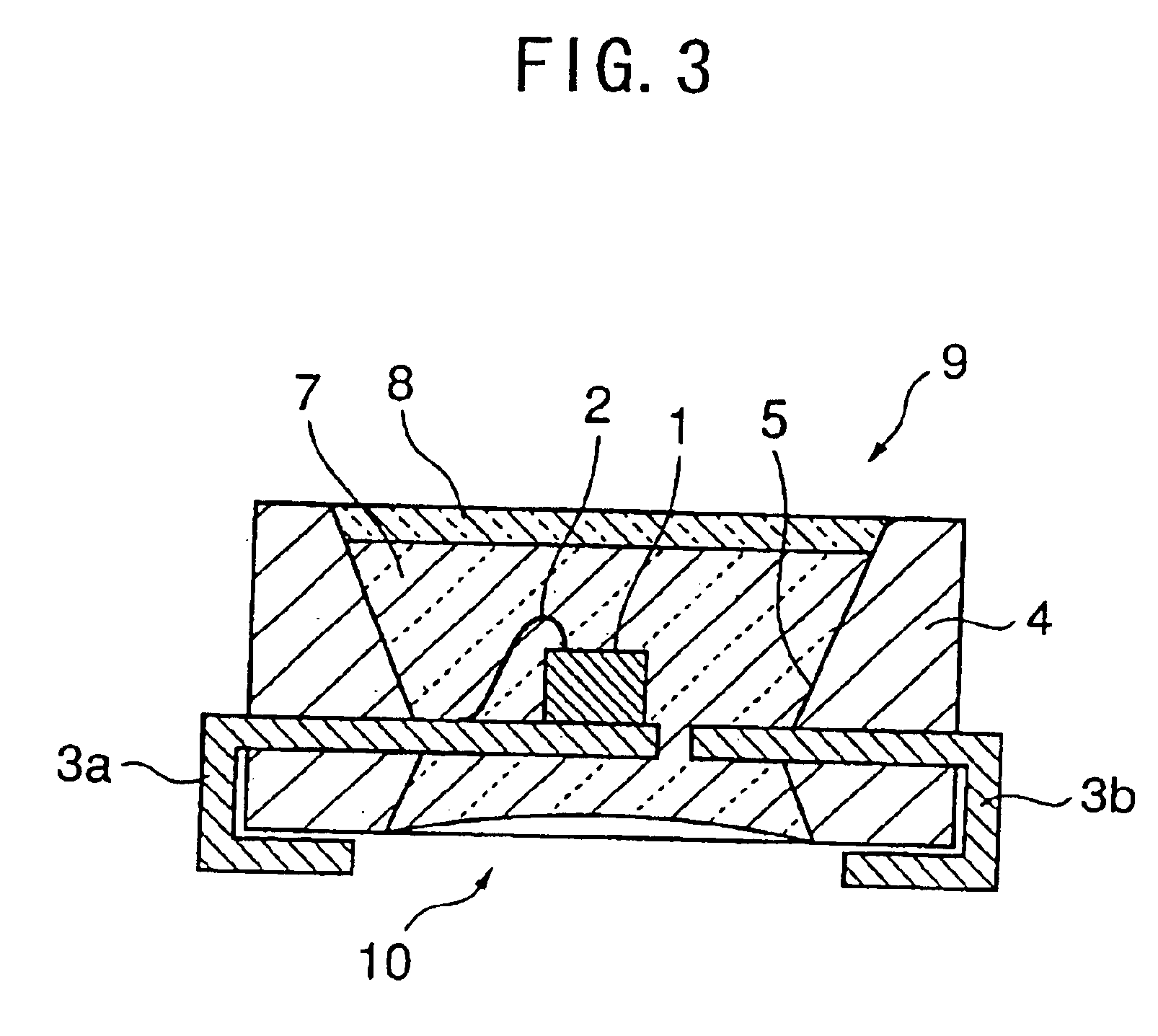Chip-type LED and process of manufacturing the same
a chip-type led and manufacturing process technology, applied in the field of chip-type led, can solve the problems of thermal stress to the junction between the molded object, color unevenness, and difficulty in completely avoiding color unevenness
- Summary
- Abstract
- Description
- Claims
- Application Information
AI Technical Summary
Benefits of technology
Problems solved by technology
Method used
Image
Examples
embodiment 1
A chip-type LED according to Embodiment 1 of the present invention is explained with reference to FIGS. 1 to 4. FIG. 1 is a plan view of the chip-type LED according to Embodiment 1 of the present invention, FIG. 2 is a front view of the same, FIG. 3 is a section taken along the line A—A shown in FIG. 1, and FIGS. 4(a) and 4(b) are views illustrating the steps of manufacturing the chip-type LED according to Embodiment 1.
As shown in FIGS. 1 to 3, the chip-type LED 101 according to Embodiment 1 of the present invention comprises a LED element 1 and tubular vessel 4 accommodating the LED element 1 therein. The vessel 4 has an upper opening 9 and a lower opening 10, the LED element 1 is positioned between the upper opening 9 and the lower opening 10 such that the LED element 1 emits light toward the upper opening 9, and the vessel 4 is filled with a light-transmissive resin 7 from the upper opening 9 to the lower opening 10. The chip type LED 101 further comprises a first lead frame 3a a...
embodiment 2
A chip-type LED according to Embodiment 2 of the present invention is explained with reference to FIGS. 5 to 8. FIG. 5 is a plan view of the chip-type LED according to Embodiment 2 of the present invention, FIG. 6 is a front view of the same, FIG. 7 is a section taken along the line B—B shown in FIG. 5. FIGS. 8(a) and 8(b) are views illustrating the steps of manufacturing the chip-type LED according to Embodiment 2 of the present invention.
In the chip-type LED according to Embodiment 2, components same as those in the chip-type LED according to Embodiment 1 are given with the same reference numerals.
As shown in FIGS. 5 to 7, the chip-type LED 201 according to Embodiment 2 of the present invention includes a light-transmissive resin 7 formed to have a convex lens portion at an upper opening 9. Other components are arranged in the same manner as in the chip-type LED 101 according to Embodiment 1.
The step of forming the fluorescent layer 8 and the step of filling the light-transmissive...
embodiment 3
A chip-type LED according to Embodiment 3 of the present invention is explained with reference to FIGS. 9 to 11. FIG. 9 is a plan view of the chip-type LED according to Embodiment 3 of the present invention, FIG. 10 is a front view of the same, FIG. 11 is a section taken along the line C—C shown in FIG. 9. In the chip-type LED according to Embodiment 3, components same as those in the chip-type LEDs according to Embodiments 1 and 2 are given with the same reference numerals.
As shown in FIGS. 9 to 11, the chip-type LED 301 according to Embodiment 3 of the present invention comprises a LED element 1 for emitting bluish-purple light, a pot-shaped cup 15 for accommodating the LED element 1 therein, a tubular vessel 4 having an upper opening 9 and a lower opening 10 and accommodating the cup 15 therein, a light-transmissive resin (member) 7 for sealing the upper opening 9 of the vessel 4, a fluorescent layer 8 for converting the bluish-purple light to yellow light, and a first lead frame...
PUM
| Property | Measurement | Unit |
|---|---|---|
| wavelengths | aaaaa | aaaaa |
| electrostatic breakdown voltage | aaaaa | aaaaa |
| electrically | aaaaa | aaaaa |
Abstract
Description
Claims
Application Information
 Login to View More
Login to View More - R&D
- Intellectual Property
- Life Sciences
- Materials
- Tech Scout
- Unparalleled Data Quality
- Higher Quality Content
- 60% Fewer Hallucinations
Browse by: Latest US Patents, China's latest patents, Technical Efficacy Thesaurus, Application Domain, Technology Topic, Popular Technical Reports.
© 2025 PatSnap. All rights reserved.Legal|Privacy policy|Modern Slavery Act Transparency Statement|Sitemap|About US| Contact US: help@patsnap.com



